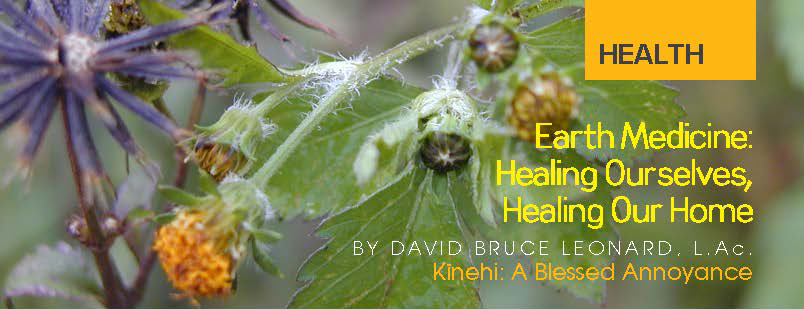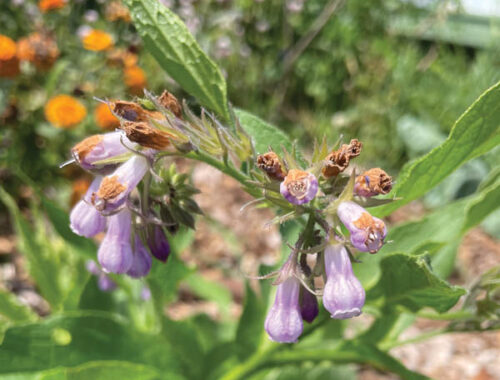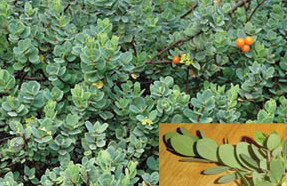
Earth Medicine: Healing Ourselves, Healing Our Home
 Kānehi: A Blessed Annoyance
Kānehi: A Blessed Annoyance
By David Bruce Leonard
One of the world’s best and most aggravating plant medicines grows here in Hawai‘i—right at our feet.
From the dandelion and silversword family, this “blessed annoyance” is known throughout the world as quite the medicinal marvel. It is also well-known for the hundreds of needle-like hitchhikers that protrude from the flower head and stick to our clothing as we absentmindedly brush past it.
This plant friend, Bidens pilosa, has many names in many different languages. Bidens pilosa is the agreed-upon botanical name, but in Hawai‘i, it is known as kīnehi or spanish needle. In China it is called xian feng cao or nian shen cao.
To say that kīnehi has a multitude of uses is to understate the matter. In Hawaiian medicine, Bidens is used for fatigue, fever, heartburn and asthma. In China, it is used for influenza, sore throat, appendicitis and hepatitis. The leaves are used in the U.S. as a tea for bladder infections and gout. There are hundreds of potential uses listed in research papers and ethnobotanical journals. And in many instances the cross-cultural uses are very similar, if not identical.
Kīnehi is used all over the world for various kinds of infections, both viral and bacterial. It contains plant chemicals called “polyacetylines” that are antibacterial when exposed to sunlight. So if you drink the tea for a bacterial infection, it is good to get out into the sun for at least a few minutes where the sunlight can penetrate the skin and enter the capillary bed. When the light hits the chemicals in the bloodstream, they become antibacterial.
It is not necessary to do this if you are using the plant for a condition other than an infection, such as joint pain.
In addition to being a great medicinal plant, kīnehi is also a tasty wild edible. Because I am not fond of the taste of the raw leaves, I always cook them. I use the leaves in soups and often add them to grains such as rice or quinoa. They blend well and easily in stews, and adding them at the end while cooking grains will do the trick, making for a tasty and nutritous addition to an otherwise bland meal.
Eating the leaves is a good way to get the medicinal properties on a daily basis. Many of our local folks use the leaves this way to reduce chronic inflammation, a known health hazard in our fast-food world. And indeed, in animal models, Bidens has been shown to reduce inflammation through its interruption of inflammatory pathways in such conditions as allergies and arthritis.
So eating kīnehi leaves in a meal or drinking it regularly as a tea may be a good idea, although as a rule of thumb, I recommend taking one week off per month when using any medicinal plant. This allows body chemistry to come back to baseline and mitigate any dependency or physiological “enabling” created by daily use of the plant.
Kīnehi is also used as a broad spectrum liver protectant and is sometimes recommended as a daily supplement for chronic hepatitis.
In gathering, it is traditionally pulled up by the roots. After pule (prayer), the roots are briefly scalded in boiling water and the plant is hung upside down to dry. This protocol allows the nutrients of the plant to penetrate into the leaves and flowers, which are then cut and stored for later use.
And finally, some of our kama‘āina have gotten remarkably creative about using our local plants as food and medicine. Students at Windward Community College on O‘ahu participate in an annual ethnopharacognosy taste-off and recipe contest. In this contest, they take a local “weed” and study its scientific and folk medicine properties. They then create recipes and products from what most people consider a “pest.” In one of these contests, kīnehi was the chosen plant.
And who knew? It turns out that kīnehi inhibits the bacteria that cause peptic ulcers as well as three other oral pathogens. So what did the students do? Armed with this knowledge, these akamai (smart) folks created a dental powder and a chewing gum, for easy access to the healing properties of this plant.
I have not yet heard how they fared in the contest.
Never take any plant internally without a 100% positive identification and proper preparation.
Never attempt to use herbal medicine without the guidance of a traditional elder or a licensed healthcare provider.
Do not try to be your own doctor. ❖
Learn more about the Earth Medicine Institute
For story references and additional information, contact writer David Bruce Leonard


